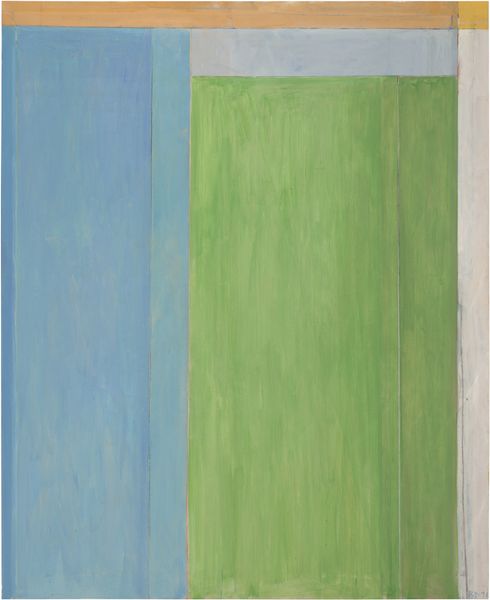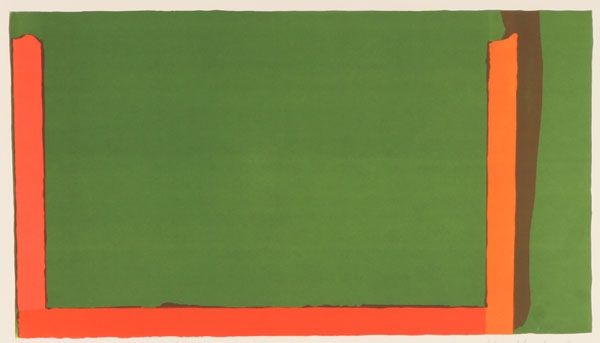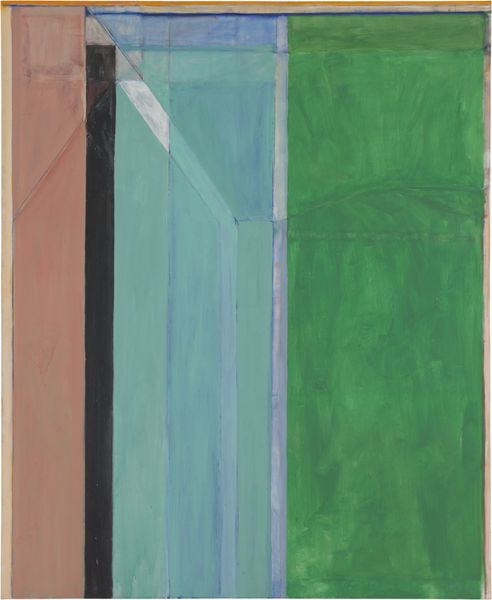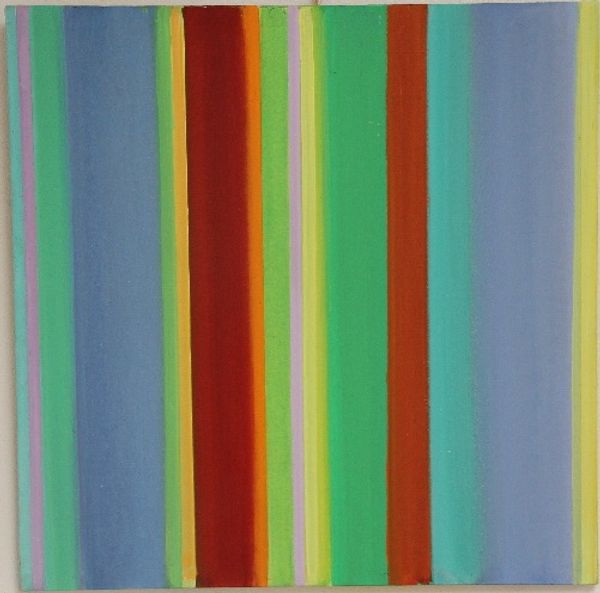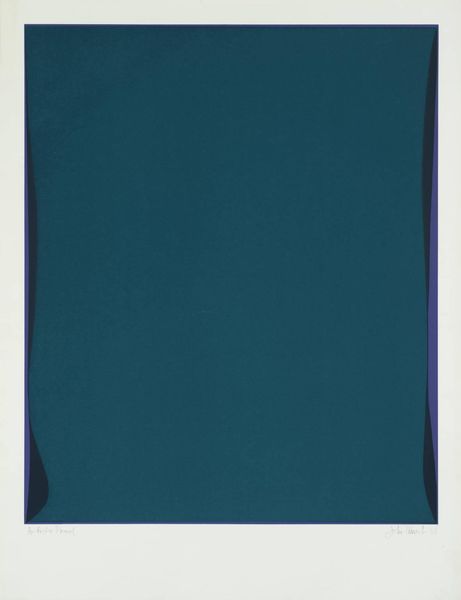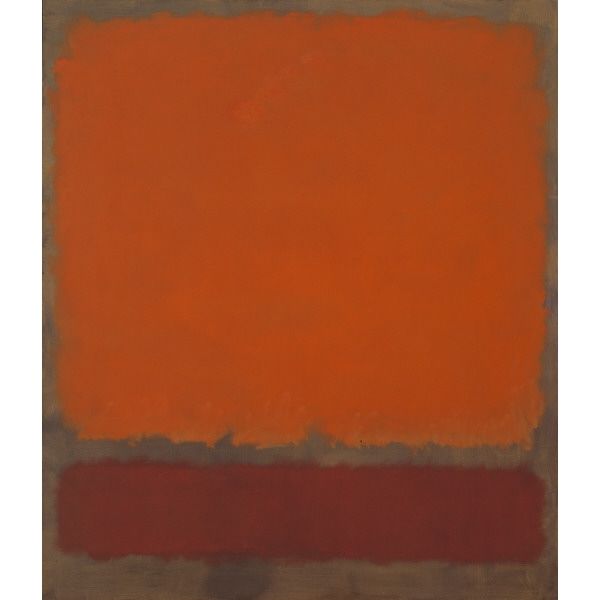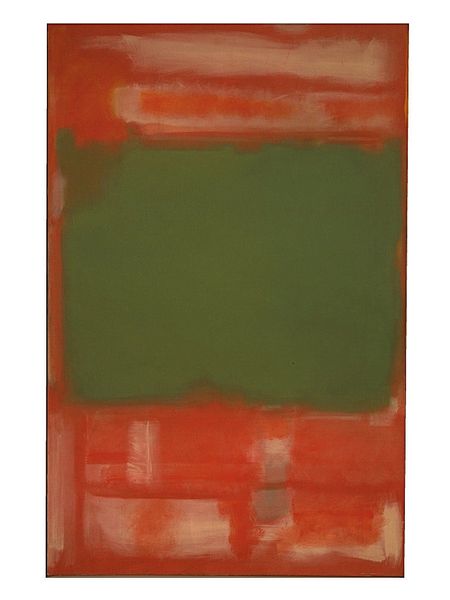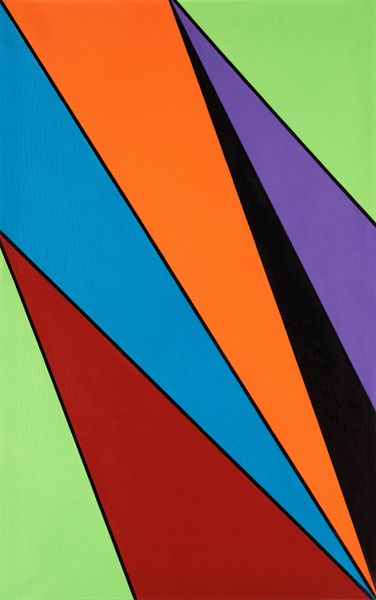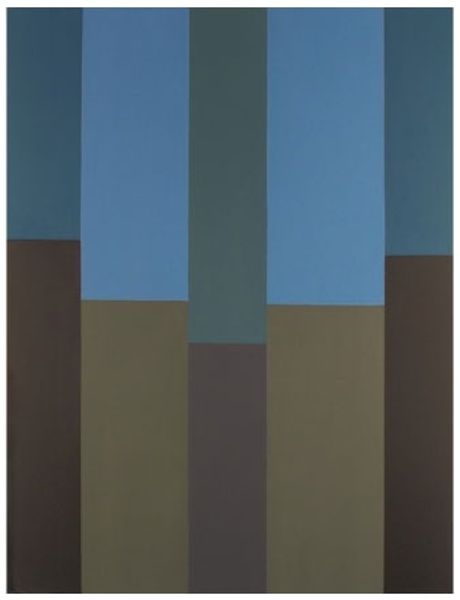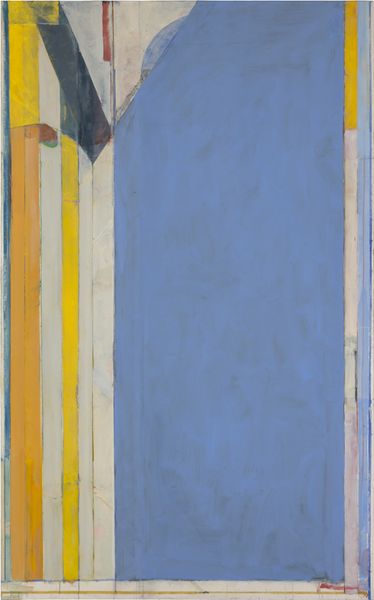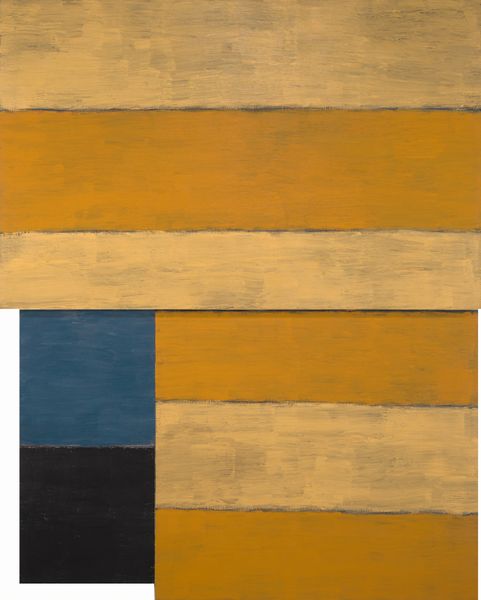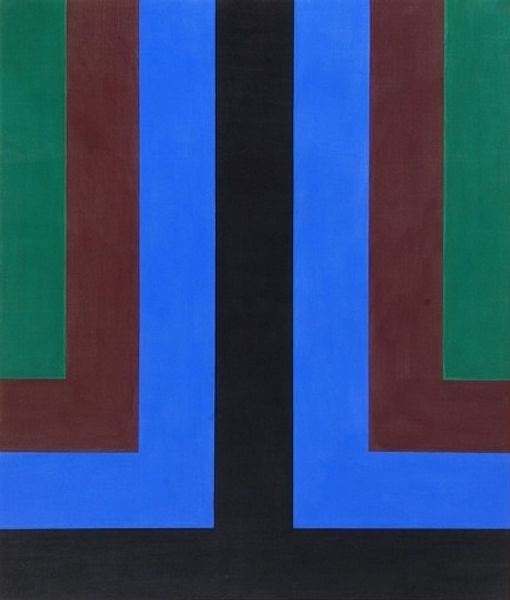
Copyright: Sherrie Levine,Fair Use
Curator: My first impression is of incredible coolness; almost glacial. Editor: Let's consider Sherrie Levine's "Broad Stripe: 6," executed in acrylic paint in 1985. This work embodies minimalist principles through its deployment of vertical, uniformly colored bands. Curator: There is a sense of both stability and tension here. The choice of colours – a somewhat muted, almost aqueous green alongside a striking teal – contributes to this dichotomy. It's quite calming yet slightly unnerving. Editor: Indeed. Levine's strategy of appropriation complicates the reading of the colours and lines. By re-presenting the visual language of colour field painting, she invites critical reflection on originality, authorship, and the pervasive nature of images in our culture. Curator: Appropriation has always been a strategy for social commentary, and it also appears to play into semiotics – here the use of simplistic colors invites personal narratives with cultural connotations. The work feels very symbolic. Editor: Absolutely, the visual purity belies its intellectual density. The almost rudimentary execution allows us to engage with the underlying conceptual framework without being distracted by, shall we say, conventional aesthetic niceties. The verticality speaks volumes. Curator: And despite the limited palette, there’s a curious luminosity; a subtle depth achieved through layering or perhaps the specific acrylic formula itself. These flat planes ripple on a closer view. The bands vibrate against each other despite their shared hues, evoking an interplay of cultural forms. Editor: And further emphasizing this recontextualization, consider the numerical designation – ":6." This act is both assertive, highlighting appropriation in this work, while remaining emotionally cold to the viewer, an inherent function of the colour-field. Curator: Precisely. Through this lens of colour, stripe, and scale, Levine prompts a richer discourse on what defines authentic creative gesture versus mechanical or impersonal reiteration. Editor: So it is not a painting of stripes so much as a question about painting. A painting of questioning. It seems apropos. Curator: I agree, it definitely compels reconsideration of what it means to be "original" in art and culture. Editor: For me, this prompts reflections on authenticity and value – elements perhaps irrevocably intertwined.
Comments
No comments
Be the first to comment and join the conversation on the ultimate creative platform.
